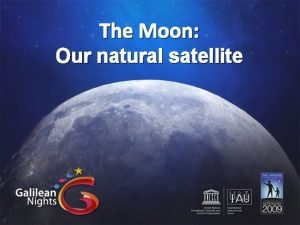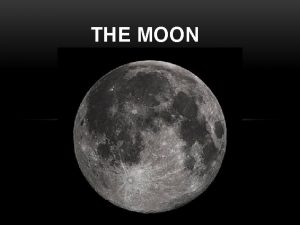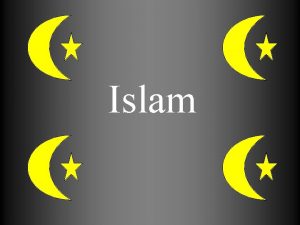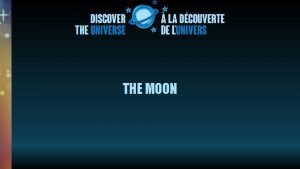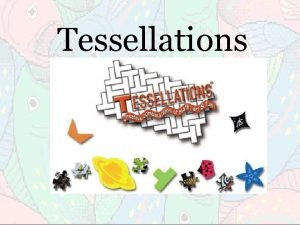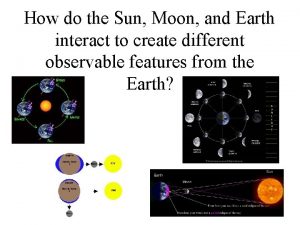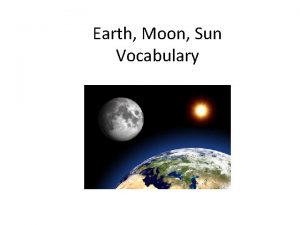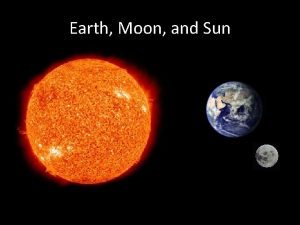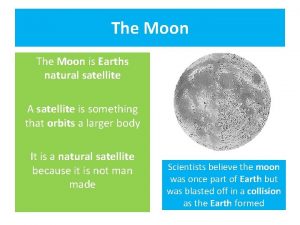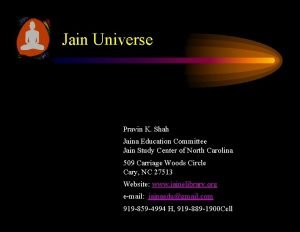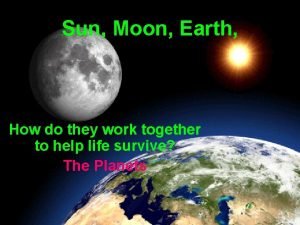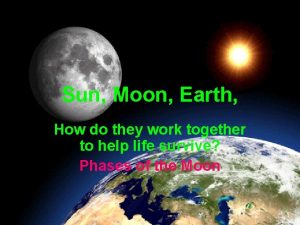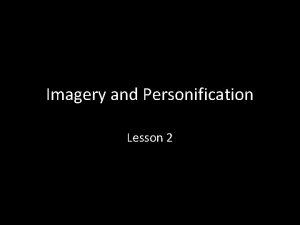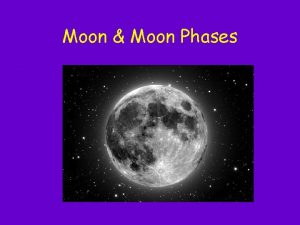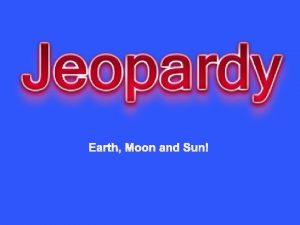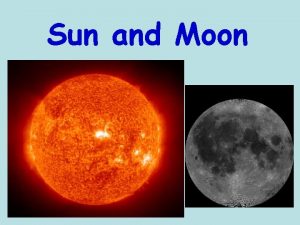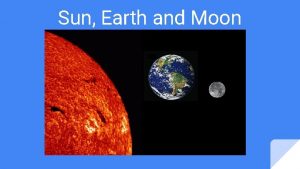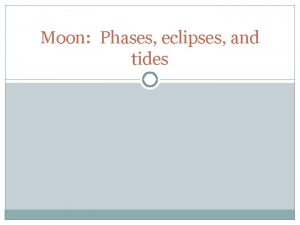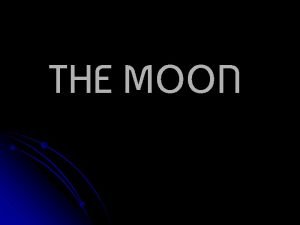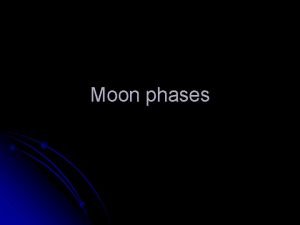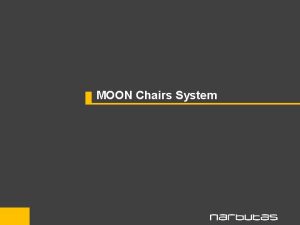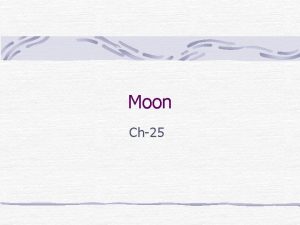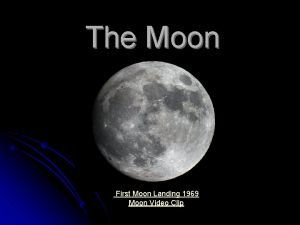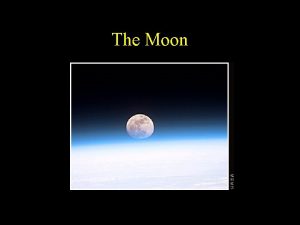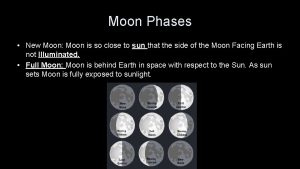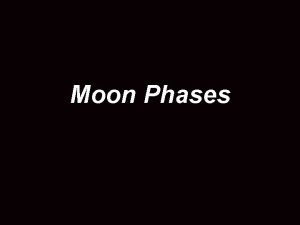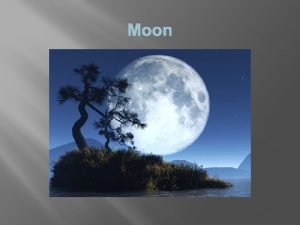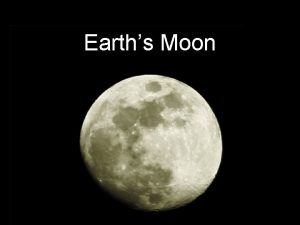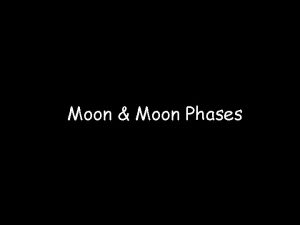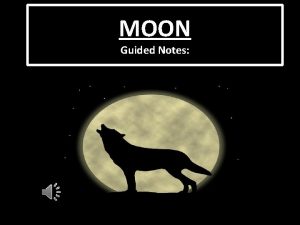Sun and Moon The Sun is A star






















- Slides: 22

Sun and Moon

The Sun is…. • A star • In the Main Sequence stage • 99% of the total mass in the solar system • 109 times as big as the Earth

Energy Production in the Sun • Nuclear fusion occurs in the sun to give it its energy. • Hydrogen is converted into Helium.

Structure of the Sun • The sun does not have a solid surface. The visible surface is where its atmosphere becomes so thick that you can’t see through it. • The sun is divided into 6 layers.

Layers of the sun

Layers of the Sun • Corona- Outermost part of the sun’s atmosphere. Visible only during a solar eclipse • Chromosphere- section of the sun’s atmosphere below the corona. • Photosphere- the visible part of the sun’s atmosphere. The “surface” we see. • Convective Zone- Section where convection currents carry energy to the outer atmosphere of the sun

Layers of the Sun Continued. . . • Radiative Zone- Very dense section of the sun where energy is trapped. • Core- inner part of the sun where the sun’s energy is produced by nuclear fusion. What Layer is shown here? Hint: Solar Eclipse

Solar Activity • The circulation of energy causes gas in the photosphere to churn, causing magnetic fields that reach into space. – Sunspots- when the activity slows down in one spot, and the photosphere becomes cooler than other areas. Sunspots are cooler, dark spots on the sun. • Sunspots change in a regular pattern. About every years there is a peak in sunspots. 11 They might affect our climate and cause lower temperatures on earth.

Sunspots

Solar Activity continued. . . • Solar Flares- regions of extremely high temperatures and brightness that develop on the sun’s surface. When they erupt, they send streams of electrically charged particles into the solar system. – They can extend several thousand miles into space within minutes. – Particles from solar flares reach earth and interrupt radio and cell signals.

Solar Flare

Aurora Borealis Northern Lights • When solar particles enter our atmosphere, they are attracted to the poles, and cause Aurora Borealis

Formation of the Moon • Three explanations for how the moon could have formed: – Twin Theory – Meteor Theory – Capture Theory

Twin Theory • The moon formed at the same time as Earth. – Gravity pulled particles in the solar system together to make the earth and the moon out of a nebula

Meteor Theory • When Earth was first cooling, a meteor struck it and “splashed” a piece off which hardened to form the moon.

Capture Theory • The Moon formed someplace else, it flew by Earth and gravity captured it into orbit.

Features of the Moon • Maria- smooth dark plains on the moon • Highlandsrugged mountains on the moon that appear as light places.

Features of the Moon • Rilles- lines on the moon where the crust of the moon cracked when it cooled. • Craters- round impacts from meteors

Why are there so many craters on the moon? • The moon has no ATMOSPHERE, so it has no WEATHER, so there is no EROSION. • Therefore, when the moon gets struck by a meteor, the crater stays there forever.


Label each section #1 - #9

 Myrrh is mine its bitter perfume
Myrrh is mine its bitter perfume Which moon phase occurs directly before a new moon
Which moon phase occurs directly before a new moon Which moon phase occurs directly before a new moon
Which moon phase occurs directly before a new moon Moon sister moon calendar
Moon sister moon calendar Home.hiwaay.net/ krcool/astro/moon/moon tides/
Home.hiwaay.net/ krcool/astro/moon/moon tides/ What phase is this
What phase is this Moon and star symbol meaning
Moon and star symbol meaning Isa rime
Isa rime And he stoppeth one of three
And he stoppeth one of three A star and ao star algorithm
A star and ao star algorithm Andreu cardo martinez
Andreu cardo martinez Spider tessellation
Spider tessellation How the sun moon and earth work together
How the sun moon and earth work together What season is this
What season is this Does the sun and moon move
Does the sun and moon move Earth vs sun
Earth vs sun Whats a natural satellite
Whats a natural satellite Earth moon sun relationship
Earth moon sun relationship Moon and sun comparison
Moon and sun comparison 14 rajlok
14 rajlok How the sun and moon work
How the sun and moon work How does the sun moon and earth work together
How does the sun moon and earth work together Personification about moon
Personification about moon



